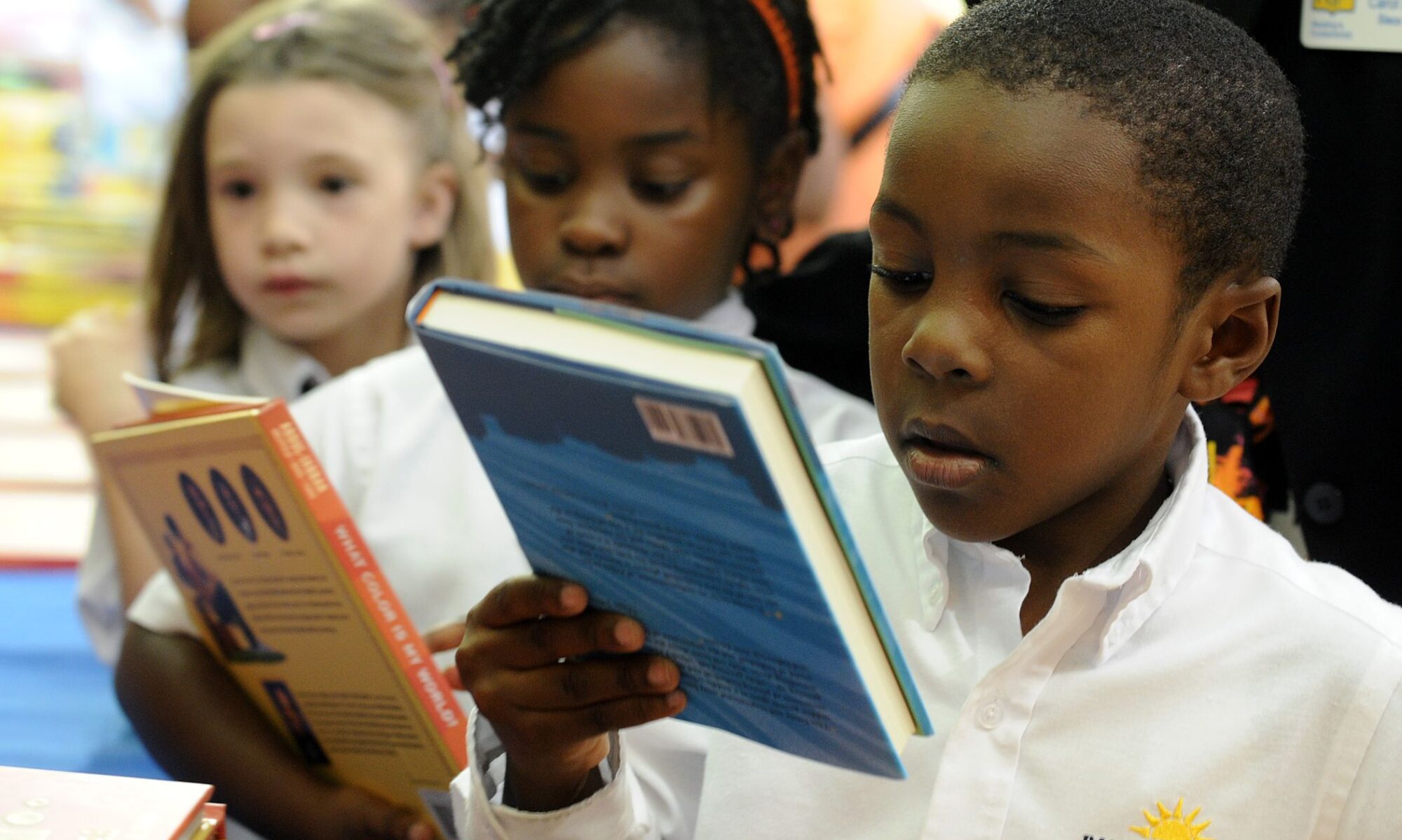Black History Month Activities
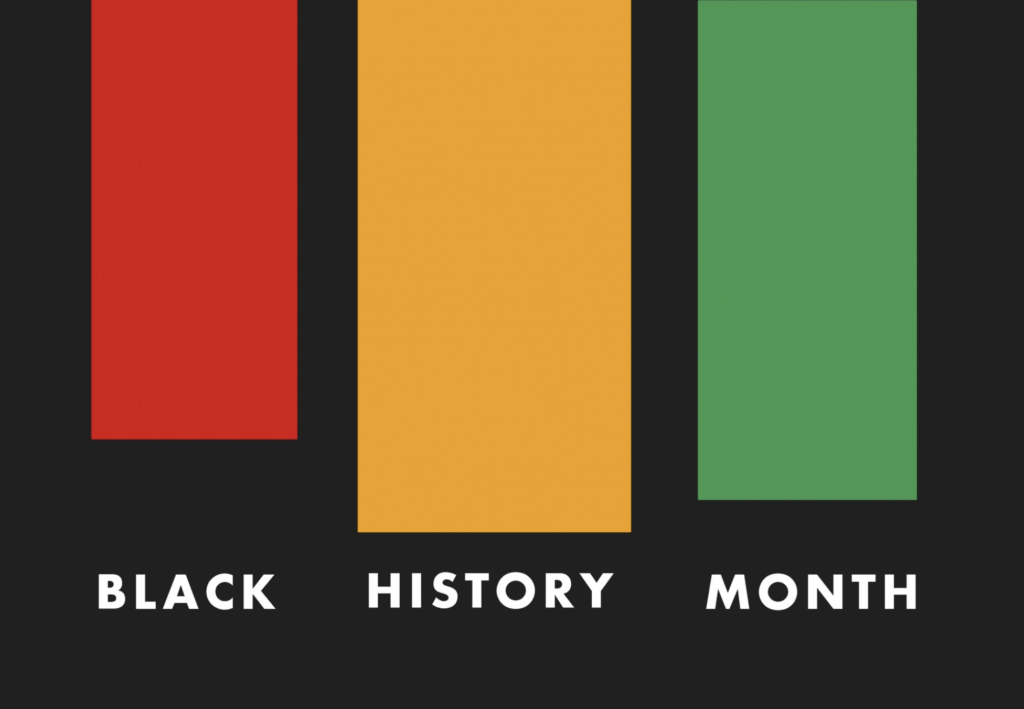
Table of Contents
Making Rockets
Age: Kindergarten- 2nd grade
Objective: Teach youth about Mae Jemison, the first Black woman to go to space and encourage positive representation for Black and female students.
Directions:
1. “Ask your child[ren] to share things they know about space. Feel free to jot down some notes based on what they say.
2. Ask your child what they think it would be like to travel to space. Show them pictures of Mae in space and pictures of space itself. They can also see a video of an astronaut floating in space.
3. Ask your child to point out things they notice about space so far. Feel free to jot down some notes based on what they say.
4. Explain to your child that Mae Jemison is trying to figure out how to go to a new solar system. Tell them that solar systems are filled with planets that orbit, or travel around, a star.
5. Tell your child to imagine Mae Jemison was successful finding out how to get to another star and they are an astronaut on the rocket traveling to that star. Have your child create a paper rocket ship. They can cut: a long rectangle for the body of the ship a triangle for the top of the ship little circles or squares for the windows two rhombuses for the fins at the bottom of the rocket wavy flames for the exhaust
6. Have your child glue all the pieces of the rocket as seen in the picture.
7. Ask your child to cut out their face from a picture to add to one of the windows of the rocket. If they want to bring family along with them, have them add more people to each window.
8. Finish the activity by asking what your child wonders about space. Write some notes about their thoughts to guide future activities and read-aloud books.”
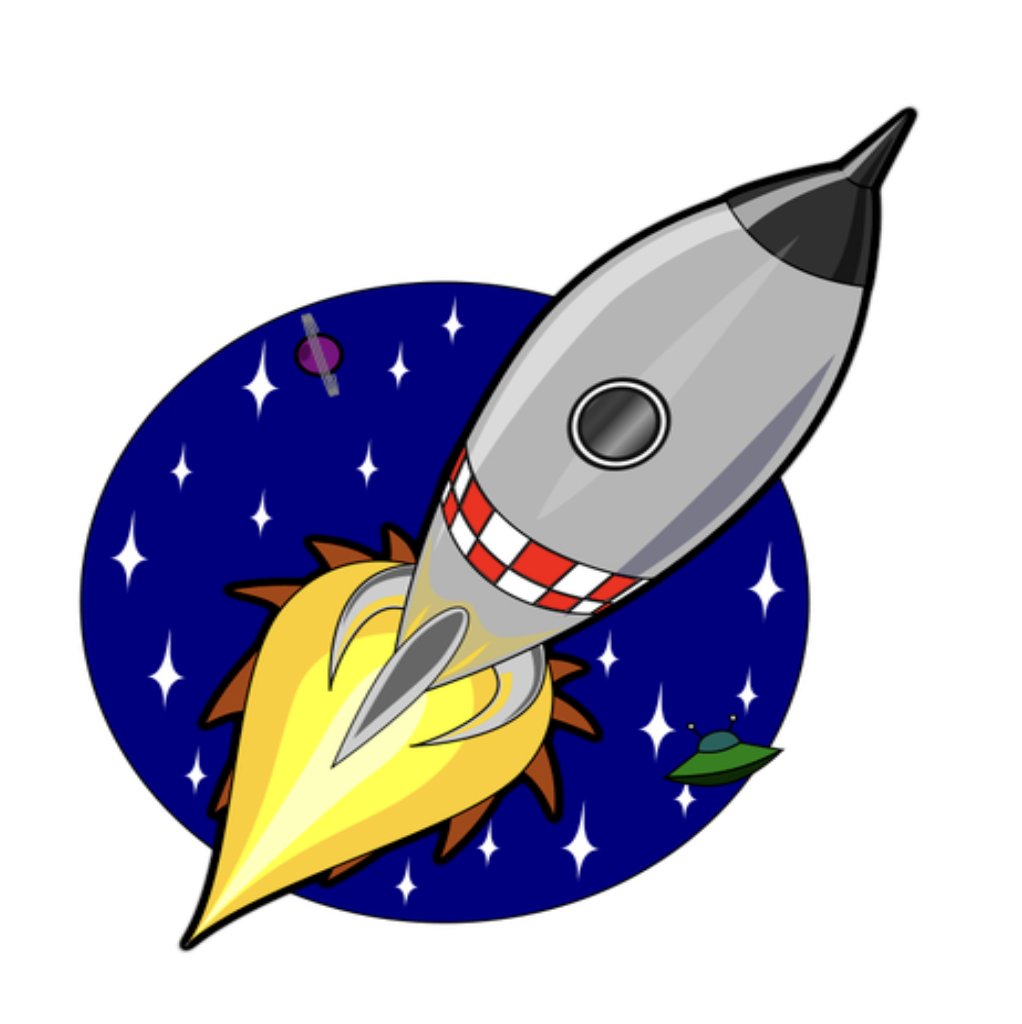
Source: https://www.education.com/activity/article/rocket-like-mae-jemison/
Making Paper Music Notes
Age: 4th-7th grade
Objective: Teach students about the history of Black musicians pioneering Jazz music and engage their creativity with a related arts activity.
Directions:
1. “After your child has had a sampling of the great jazz genre music (see below) you can let them try to distinguish which types of instruments they hear. Does she notice the swinging trumpet beats, the sliding trombones, the scatting of a clarinet?
2. Help your child write a list of the instruments associated with jazz songs. Try using the Internet if you need some help with the names of instruments.
3. After your child has a nice list of instruments, ask them to draw a picture of each, again using the Internet for any needed assistance.
4. Encourage your child to try to add in as many details as possible once they have drawn and colored the instruments.
5. Help your child cut the smaller pictures out into little squares of paper.
6. Ask your child to cut music note shapes out of black construction paper for them to glue the different instruments onto. Remind your child that they should make the head of the music notes big enough to fit the squares of paper on and cut out one note for each instrument square.
7. Once your child has cut out all of the notes, help them paste the picture of their instruments on the head of the note.
Here are some suggested jazz songs:
“So What” by Miles Davis
“Take Five” by Dave Brubeck
“Heebie Jeebies” by Louis Armstrong
“What a Wonderful World” by Louis Armstrong
“A-Tisket, A-Tasket” by Ella Fitzgerald
“Electric Bath” by Don Ellis
“Portrait of Jazz” by Bill Evans
“Mister Magic” by Grover Washington, Jr.”
You can also have jazz music in the background to add in some extra fun!

Source: https://www.education.com/activity/article/jazz-music-notes/
Paper Mosaics
Age: K-12
Objective: To design a paper mosaic that signifies African art and African American culture and explore Black identities.
Directions: For directions, watch this video, from a Hartford-based Black artist.
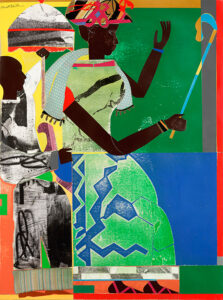
Source: https://www.thewadsworth.org/blackheritageday-2022/
Prot.E.C.T Our Heritage
Age: 9th-12th grade
Objectives: Introduce Black male youth to the Trinity College Men of Color Alliance and provide students with an affinity group to further explore their identity.
Directions: Email moca@trincoll.onmicrosoft.com to learn more about the Trinity College Men of Color Alliance’s ProtE.C.T. Our Heritage event in partnership with the Wilson-Gray YMCA. Participating students have the opportunity to meet role models who share their cultural identity and engage in community-building.

Source: https://bantamlink.trincoll.edu/organization/men-of-color-alliance
Dove Decorations
Age: 2nd-5rd grade grade
Objective: Teach students about Martin Luther King and his vision for a just peace.
1. “Begin by helping your child draw the shape of a dove on a piece of construction paper. Let her choose to draw one that is either perched or in flight. Once the first dove is drawn, ask her to cut it out.
2. Have your child trace this dove shape onto multiple pieces of paper. Although doves are normally white, she can use multiple colors of construction paper to create a beautiful array of birds. Cutting out at least eight or nine of them will allow for a lengthy string of doves.
3. Once all the doves have been traced and your child has carefully cut them out, encourage her to draw faces or other embellishments on the doves. Remind her of the parts of the dove: beak, little feet, and eyes. Invite your child to also add a little vest, hat, or whatever else she wants.
4. After your child has decorated each dove, help her cut a length of string that is long enough to incorporate each dove and leave enough room at the ends to tie or hang them on the wall or doorway. Space the doves out as evenly as you can and help her attach them to the string using the hot glue gun.
5. After each dove has been affixed and the glue has dried, help your child hang up the decor. Allow her to choose the site and if it is out of reach, either tie it up, tack it down with pins, or use a bit of tape to hang it up.”
6. Discuss how doves are often a symbol of peace. Ask students, “what does peace look like to you?” and make a list on a chalk board or white board. Then, discuss how Martin Luther King believed that peace and justice must go hand in hand. Introduce the idea that peace is more than the absence of conflict, but housing, education, food, and care for people of all races, cultures and backgrounds.

Source: https://www.education.com/activity/article/dove-decor/
Nobel Peace Prize
Age: 4th-6th grade
Objective: Encourage students to see themselves as peacemakers and teach them about MLK’s nonviolent protests.
Directions:
- “Start off by letting your child think about what they would do to bring peace to all nations of the world. If they are having trouble thinking on such a grand scale, perhaps brainstorm ways to bring peace to the United States or even their own city. Encourage your child to come up with a few good ideas, perhaps three, and ask them to write them down.
- Help your child cut out a circle from the construction paper to constitute the Nobel Peace Prize medal. Ask them to cut it out of yellow or orange, or they may want to make it a little more colorful and pick out a different hue.
- After the circle has been cut out, help your child write down their three goals for obtaining peace on the front of the medal. Once their ideas for peace are written down on one side, ask them to flip the medal over and draw out what peace would look like to them. Give your child a few ideas, such as people holding hands, a dove, or even smiling faces and then ask them to draw away!
- With the Nobel Prize now decorated, ask your child to carefully punch a hole in the top of and run a string through the hole to hang it from around their neck, a doorknob, or on a wall.”
- If students brainstorm peace projects that may be tangible for the community (feeding the homeless, helping younger students in school, etc.) work with your team to follow-up on these ideas and create a plan of execution.
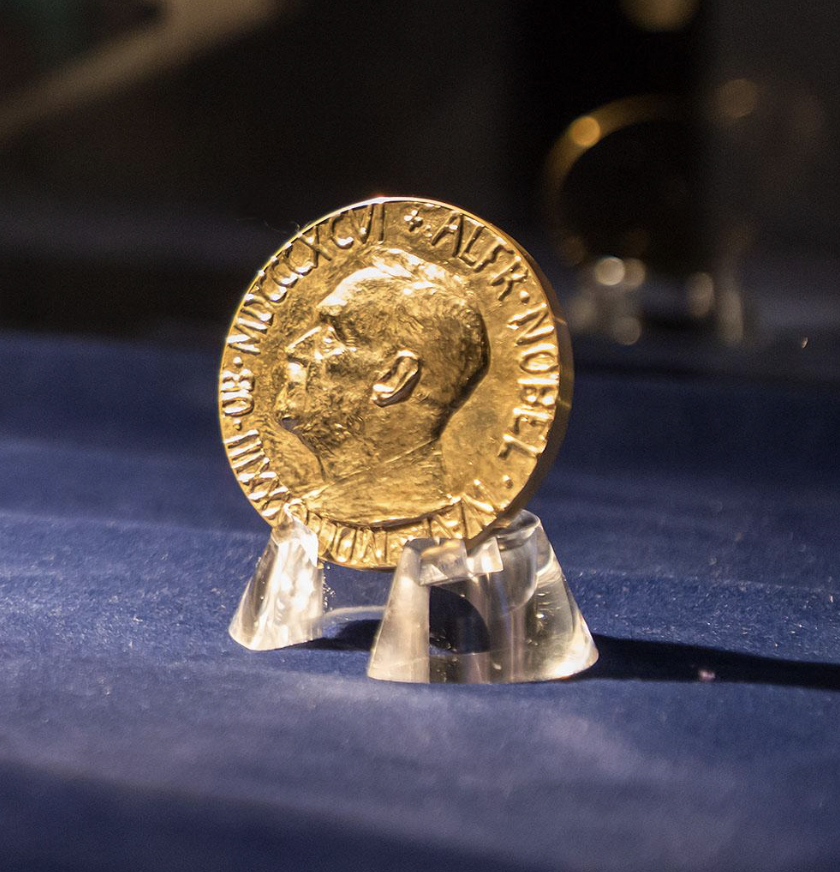
Source: https://www.education.com/activity/article/nobel-peace-prize/
Weave a Mkeka
Age: 1st- 5th grade
Objective: Learn more about the cultural tradition of Kwanzaa by engaging in a hands-on arts activity!
Directions: Before the activity begins, explain that Kwanzaa is a cultural celebration at the end of December. Black Americans, Canadians, and Caribbean sometimes celebrate Kwanzaa. Originating in the 1960s, Kwanzaa is a Black celebration of life and harvest. During Kwanzaa, families light red, green and black candles. The three red candles symbolize struggle, the three green candles represent hope, and the center black candle represents people with African roots (Greenspan 2021). The Mkeka is a traditional textile mat and serves as one of the symbols for Kwanzaa. The significance of this mat is the idea that nothing can be built without having a foundation upon which to rest.
- “Cut two 9″ x 12” rectangles out of the paper bag.
- Invite your child to color a side of either one or both paper rectangles. Red, green, and black are traditional Kwanzaa colors, so encourage them to get creative with crayons or markers in these hues.
- Using a ruler and pencil for assistance, have your child cut nine 12″ x 1″ strips out of one of the rectangles.
- From the remaining rectangle, assist your child in cutting nine 1″ strips starting at one edge of the shorter side and reaching to one inch from the other short end. To clarify, this means you should not cut all the way through the paper; there should be a 1″ wide area that is not cut through. It may be helpful to use a pencil and ruler to mark both the width of the strips and the spot where your child will end their cut for each strip. However, encourage your child to get involved with the measuring as it will provide great math practice for them!
- Now it’s time to put it all together! Show your child how to weave the strips they cut in step 3 over and under the connected strips. Help them spread glue under the end of the strips to hold them in place.
- If your child is interested in fringed edges for an extra touch, show them how to use scissors to cut fringes into the edges of all or some of the paper strips.”
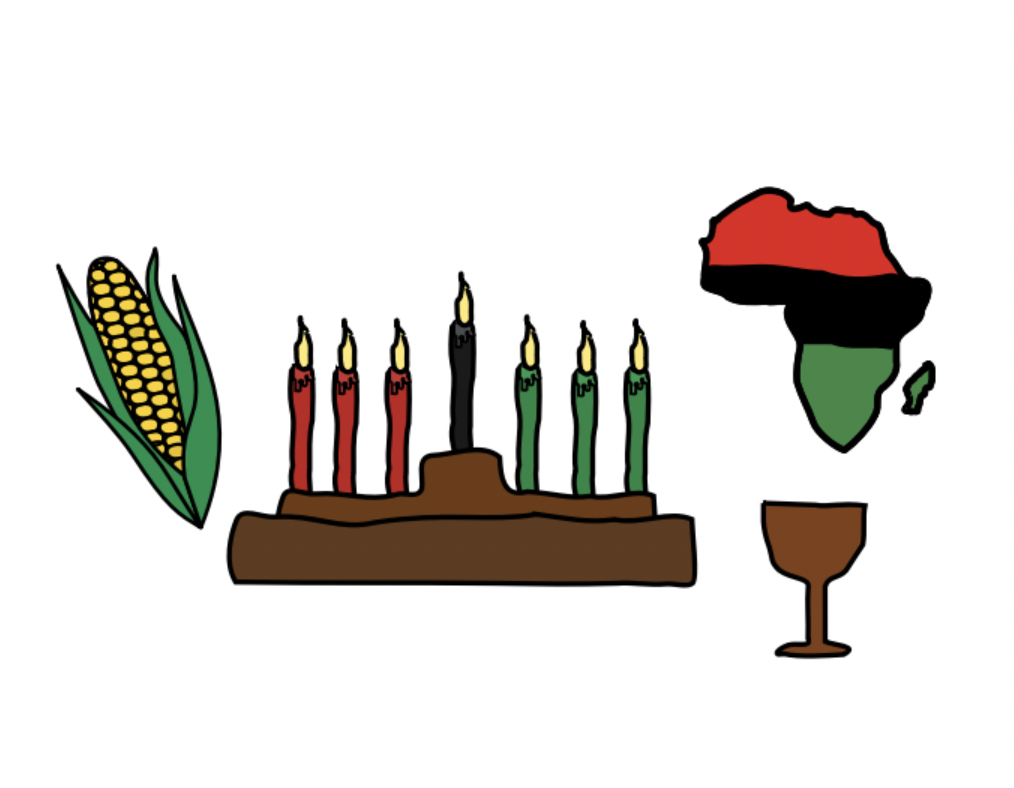
Source: https://www.education.com/activity/article/weave-kwanzaa-mat/
Watch Just Mercy
Age: 8th-12th grade
Objective: Teach students about racial injustice within the American legal system and Bryan Stevenson, the Black attorney who is working to challenge it.
Directions: Watch Just Mercy with students. Once the movie is over, ask students to get into groups of two or three and discuss the following questions: “What are your immediate reactions after watching Just Mercy? Do you need any support from us right now? What are ways that we, as students, can work to make the legal system more fair?”
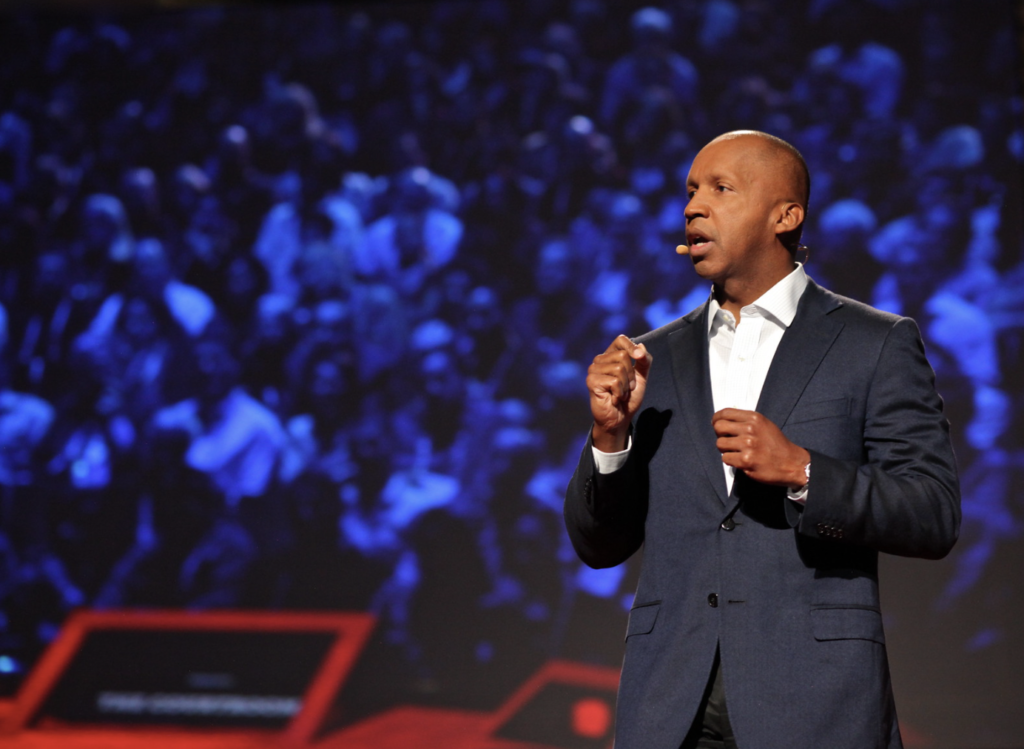
Source: BGCH team
Loveliness in Diversity
Age: 4th-5th grade
Objective: In this writing activity, students will learn the deeper meaning of “diversity” and to appreciate everyone’s differences in background, culture, and values, etc. They will all construct their own poem about diversity and what it means to them. They can paste it onto a paper and decorate/draw however they like.
Directions:
- “Ask your child what the term “diversity” means to them, and
share what it means to you. Emphasize the importance of
recognizing the similarities shared by all humans while also
appreciating our differences. (Same, Same But Different is a great book to read with your child when considering the meaning and importance of diversity.) - Ask, “How can we see the beauty and loveliness in diversity?”
- Ask them why it’s important to see the beauty in differences. How does this affect relationships and communities?
- Ask your child if they have any questions.
- Give them time to complete a poem about diversity. Provide assistance when needed.”
- Allow students to decorate their poems with a construction paper background, markers, crayons and stickers.
- Optional: Invite students to share their diversity poems in front of the class.
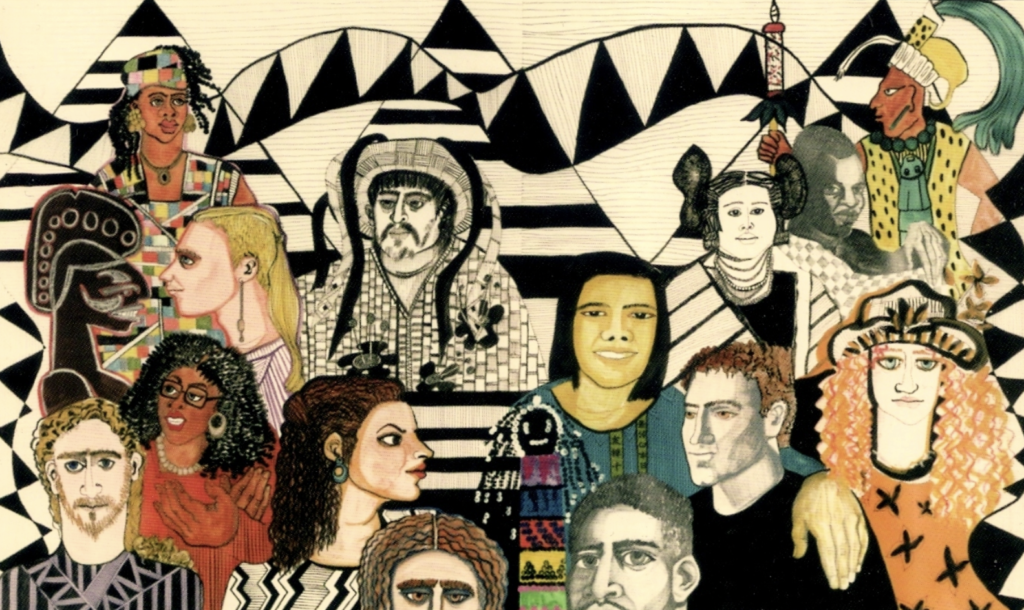
Source: https://www.education.com/activity/article/loveliness-in-diversity/
The 1619 Project
Age: 7th-12th grade
Objectives: Identify and summarize the main ideas of The 1619 Project and analyze how the legacy of slavery can be seen in modern U.S. life.
Directions:
3. Discuss as a whole group:
- After hearing the main idea of The 1619 Project, why do you think this project was initiated by The New York Times, a journalism organization?
- Journalists, historians, and creative writers worked together on this project. What do you think people with those different skills would be uniquely able to contribute? Why would it be important for them to work together?
- What new information did you learn from the video? Did anything surprise you?
- How has your experience learning about the contributions of Black Americans compared to Hannah-Jones’s experience?
- How is the term erasure used to describe the experiences of Black Americans? What (and whose) purposes does erasure serve, and how can it be resisted?
- What do you think Hannah-Jones means when she calls Black Americans “the true perfecters of American democracy”?
6. In the video, Hannah-Jones says that “you can look across modern American life and see that almost nothing is untouched by the legacy of slavery.” Place students in pairs, and explain that you are about to pass out a slip of paper to every pair, which will have the topic of one of the essays in The 1619 Project written on it. Tell students their job is to explain this issue, and discuss with their partner how it might be connected to slavery. Pass out slips of paper and put 90 seconds on the clock. When time is up, students should switch slips of paper with another group and start a new discussion. Repeat as time allows.
- One theme, idea, or issue related to Black history that I want to learn or talk about more is _______.”

Source: https://app.mizzenapp.org/curricula/ckpg1kylj29f80733fs2de4st
